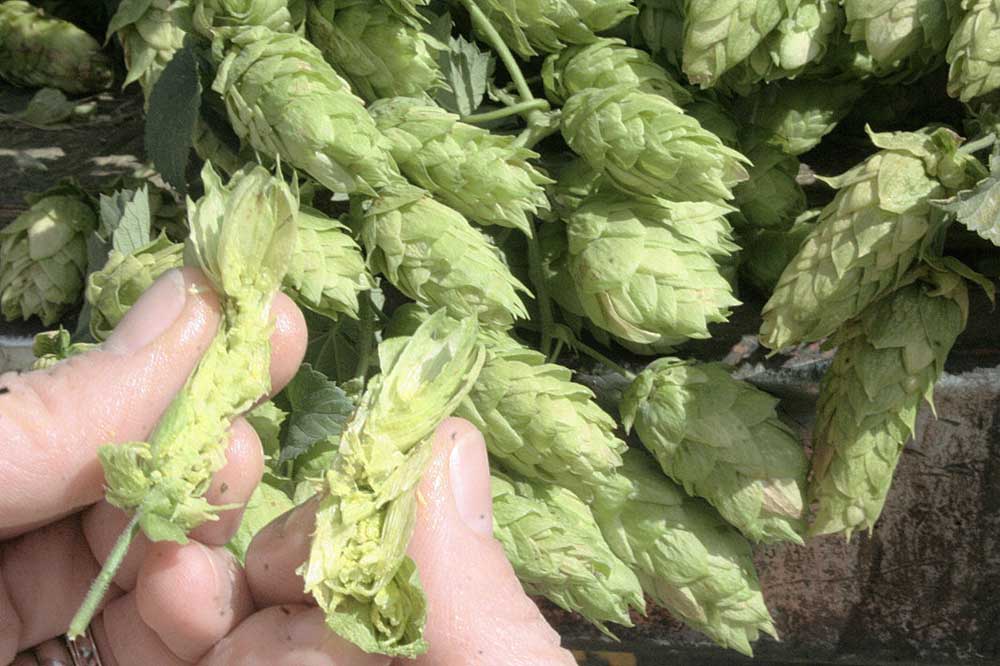Hop stocks continue to outrun demand
Published 4:31 am Friday, September 22, 2017

- Dan Wheat/Capital Press Hop cones provide extract or oil needed in stabilizing and flavoring beer. Production has been increasing for years to meet demand of craft breweries.
YAKIMA, Wash. — Even before this fall’s harvest, U.S. hop stocks are up substantially from a year ago, reflective of an oversupply that’s putting pressure on dealers and growers.
Stocks were up 15 percent at 98 million pounds on Sept. 1 versus 85 million pounds a year ago, according to a report released Wednesday by the U.S. Department of Agriculture’s National Agricultural Statistics Service.
It is the largest percentage increase in inventory of the four reports showing supply increases dating back to March 2016. The new report shows dealers and growers with 64 million pounds of hops and brewers with 34 million pounds.
“It’s actually a pretty good-sized overage and it was expected. We knew craft (beer) was slowing while aroma variety hop acreage is still increasing,” said Pete Mahony, director of supply chain management and purchasing for John I. Haas, a major processor and grower in Yakima.
Previous overages, years ago, were high alpha commodity varieties that keep for years, he said. This year’s overage is of aroma varieties for craft beer. Aroma varieties need to be used in a year or two, he said.
This past summer, 47 Hops of Yakima, a hop broker, filed for Chapter 11 bankruptcy protection to shield itself from creditors while developing a restructuring plan to pay more than $7.4 million in debts and remain operational.
Doug MacKinnon, company president, blamed the bankruptcy on craft brewers contracting for more hops than they needed.
“There definitely will be pressure on the entire supply chain, whether growers or dealers. And will there be other casualties? I don’t know,” Mahony said. “Larger dealers are pretty solid. We’ve lived through these markets for decades. Smaller ones may struggle. It’s all about proper management of inventories. Aroma varieties are expensive inventories.”
For years the proliferation of small, craft breweries fueled the demand for more aroma hop varieties. While still growing, the rate of craft brewery growth has slowed, resulting in some breweries renegotiating contracts that were based on expectations of higher growth, said Ann George, executive director of Hop Growers of America and the Washington Hop Commission in Moxee.
That returns the hops to dealer and grower inventories, she said.
George said the U.S. produces more than 80 hop varieties, and while there’s an excess supply of some, demand for others is still growing.
“The key is re-balancing by changing varieties in response to new contracts,” she said.
It takes a couple of years to bring new hops into full production and for the past five years the industry has been trying to catch up to brewer demand, she said.
“Now it appears hop acreage has exceeded current brewer demand, so it will be important to take the foot off the gas pedal until brewer demand catches up with hop acreage,” she said.
Another factor in the oversupply of hops, she has said, is big brewers are losing market share worldwide because of increased competition from other beverages. The top 10 breweries in the world decreased production by 11.4 million hectoliters — about 301.2 million gallons — from 2014 to 2015, she said.
While craft, export craft and import U.S. beer sales were all up in 2016, overall beer sales were flat, according to the Brewers Association in Boulder, Colorado.
In June, the USDA estimated Pacific Northwest hop acreage at 54,135, a 6 percent increase over the previous year.
“Hopefully, we won’t see increased acreage in 2018,” George said.
Prices of certain varieties have decreased due to plentiful supplies on the spot market, she said.
However, varieties still seeing increased demand likely will see stable pricing, she said.




